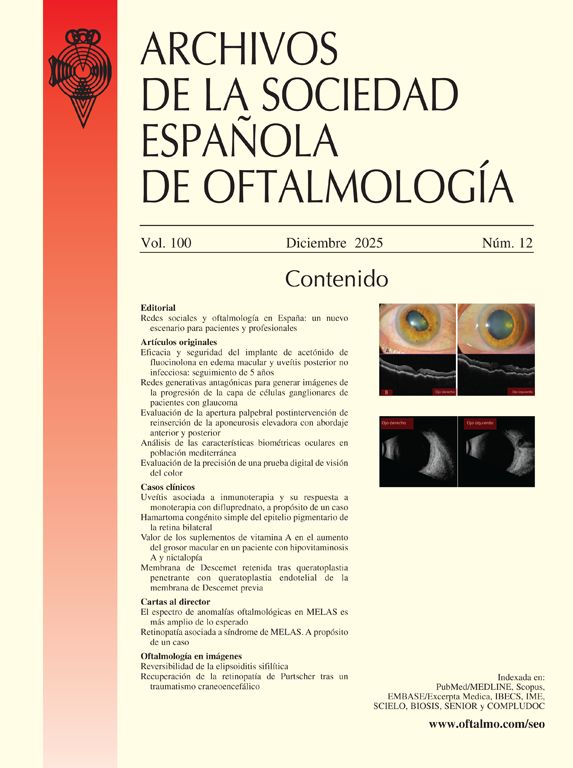La queratopatía central tóxica (CTK) es una rara complicación no inflamatoria que puede surgir tras la cirugía LASIK. Se presenta entre los días 3 y 9 del postoperatorio, caracterizándose por una opacificación corneal central, adelgazamiento estromal y un cambio hipermetrópico. En este caso clínico, se describe el caso de un paciente de 34 años con antecedentes de linfoma B cutáneo, que desarrolló CTK en el ojo derecho tras ser sometido a una cirugía refractiva con láser Excímer. Se detalla el proceso diagnóstico y la evolución clínica del cuadro tras un tratamiento conservador. Se exponen también las diferentes teorías que se han propuesto acerca de la fisiopatología de la CTK, destacando la importancia del diagnóstico diferencial con la queratitis lamelar difusa (DLK) y sus implicaciones terapéuticas para minimizar las secuelas visuales.
Central toxic keratopathy (CTK) is a rare, non-inflammatory complication that can arise after LASIK surgery. It typically presents between days3 and 9 postoperatively, characterized by central corneal opacification, stromal thinning, and a hyperopic shift. In this clinical case, a 34-year-old patient with a history of cutaneous B-cell lymphoma developed CTK in the right eye after undergoing excimer laser refractive surgery. The diagnostic process and clinical evolution of the condition under conservative treatment are detailed. Different theories regarding the pathophysiology of CTK are also presented, highlighting the importance of differential diagnosis with diffuse lamellar keratitis (DLK) and its therapeutic implications to minimize visual sequelae.








